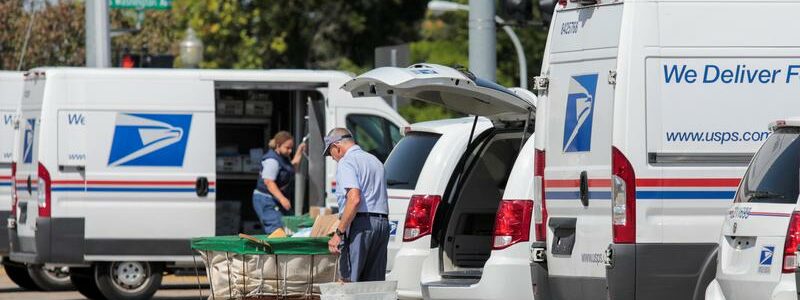
U.S. Postal Service finalizes plan to slow some mail deliveries
WASHINGTON (Reuters) – The U.S. Postal Service (USPS) on Friday finalized a plan effective Oct. 1 to slow down some first-class mail deliveries as part of efforts to cut red ink.
Postmaster General Louis DeJoy proposed in March to revise existing one- to three-day service standards to one to five days for first-class mail. USPS said on Friday that 61% of first-class mail will remain at its current standard.
USPS said in a notice published in the Federal Register current standards require it “to rely heavily on air transportation, using air cargo transportation carriers and commercial passenger air carriers.”
Delivery standards will be slower for about 7% of periodicals.
Airplanes, USPS added, are less reliable than surface transportation and costs much more because of “weather delays, network congestion, and air traffic control ground stops.”
The “addition of one or two days to current service standards for first-class mail and periodicals would enable the Postal Service to convey a greater volume of mail within the contiguous United States by surface transportation,” it said.
While acknowledging “some uncomfortable changes,” DeJoy defended the plan earlier on Friday at a board of governors meeting, saying it makes a commitment to deliver to “every address in the nation, six days a week, and strives for financial sustainability.”
USPS on Friday posted a $3 billion quarterly net loss, with a 1.1% rise in first-class mail deliveries to 12.1 billion pieces. But “volumes remain lower than pre-pandemic levels and we expect continued secular declines,” it added.
For the minority of first-class mail affected by the slower delivery window “the standard would only change by one or two days (with most of such volume experiencing a one-day change),” USPS said.
USPS added it has been unable to achieve existing “service performance targets for many years, and that these service failures illustrate the weakness of the current transportation model.”
In June, the attorneys general of 20 states asked the U.S. Postal Regulatory Commission to reject plans to slow down some first-class deliveries, saying allowing that to happen could harm local governments’ ability to fulfill essential functions.
DeJoy unveiled a plan in March to cut $160 billion in predicted losses over the next decade with the changes in service standards a key part.
USPS has struggled with poor delivery performance over the past year, facing a huge boost in packages and staffing issues due to the coronavirus pandemic. It said Thursday that through July it delivered 89% of first-class mail on time, up 1.5 percentage points.
Starting Aug. 29, USPS will raise prices of first-class postage stamps to 58 cents from 55 cents. Price hikes are needed because over the past decade, mail volume has declined by 46 billion pieces, or 28%, while single piece first-class mail declined 47%, USPS said.
Congress is considering a plan to provide USPS with $46 billion in financial relief over 10 years, including eliminating a requirement that USPS pre-fund retiree health benefits for 75 years.
The agency has reported net losses of about $90 billion since 2007. One reason is 2006 legislation mandating that it pre-fund more than $120 billion in retiree healthcare and pension liabilities, a requirement labor unions have called an unfair burden not shared by other businesses.
Source: Read Full Article